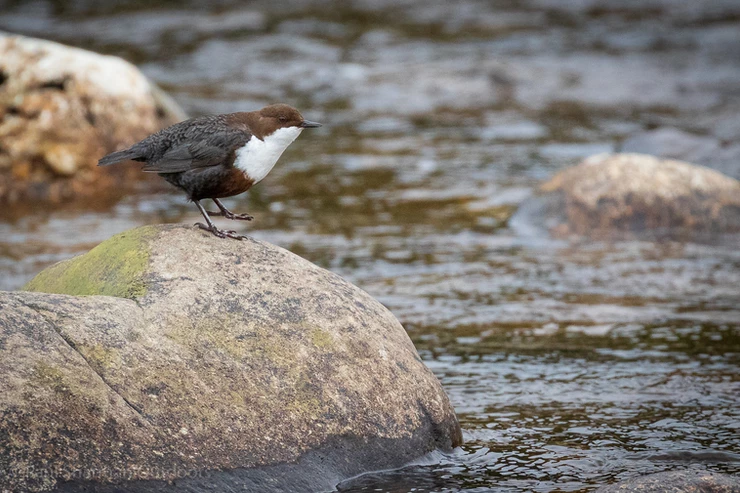From Sea to Shore

Posted on Mon 16 Aug 2021 · by Paul Sharman

Ringed plover on a rocky shoreline in Scotland.
It's not just the big iconic Scottish wildlife like the whales and dolphins we enjoy.
All our crew and staff at both Hebridean Adventures, and our sister company SKYEFARI on the Isle of Skye, love spotting all types of wildlife. Birds in particular of course are often seen whether we are at sea, along the coastline or further inland on an excursion during our wildlife watching tours around the Outer Hebrides and Scottish Highlands. We don't stop there though and enjoy finding more species during our leisure time at home and elsewhere.
This ringed plover was on a local beach along the Moray Firth near my home. It blended it quite well with the stones, where it was probably searching for flies, marine worms and anything else to eat. Once it stopped moving it almost seemed to vanish, becoming more obvious again once it resumed its wandering along the shoreline.

A dipper gets ready for its next foray underwater.
Any small rushing stream or larger river in Scotland could be home to a dipper, a wonderful little bird with their chocolate brown colouring and a clean white breast. To see them perched on a rock like this and then suddenly dropping into the water to search for their diet or insects underwater is always amazing. You might be able to spot a regular haunt if you look for a larger stone or boulder usually with a smooth surface that slopes nice and gently into the water. There will often be tell-tale splashes of white from their droppings and if it suits them they will often return to use preferred stones like this along their territory. They often bob up and down which can help a keen observer spot them from them a distance as you walk slowly along a river.

A male linnet perches at the top of a tree to sing.
Once you get inland and amongst either arable land or even a grassy meadow with plenty of seeds, you are bound to find finches and one of the handsomest has to be the linnet, the males showing pink to their breasts and foreheads. Its name apparently comes from the historical fact that it is known to enjoy flax seeds (AKA linseeds), the plant from which linen is made from the fibres. Nearer the coast they can also be found on salt marshes too. In winter they can gather together in large flocks of up to a hundred birds or more, often with their cousin the twite, and I see them near me on the stubble fields each year constantly taking off and landing again as they just don't seem to like settling for too long, probably as they feel vulnerable to predators like the merlin and sparrowhawk.
We always enjoy seeing what wildlife you have seen on your travels either with us on our cruises or minibus tours, or nearer home. Please do share your favourite photos and sightings with us on our social media on our Facebook page or tag us on Instagram or Twitter, #HebrideanAdventures